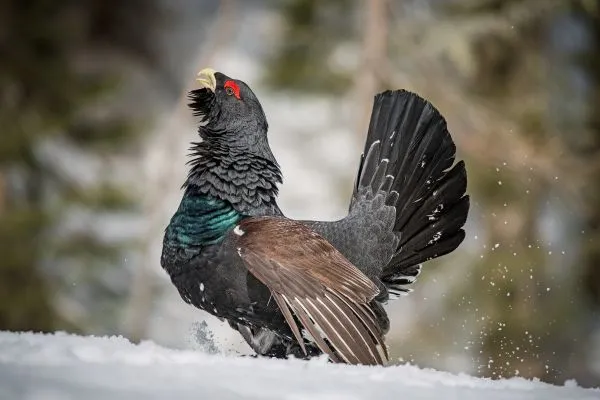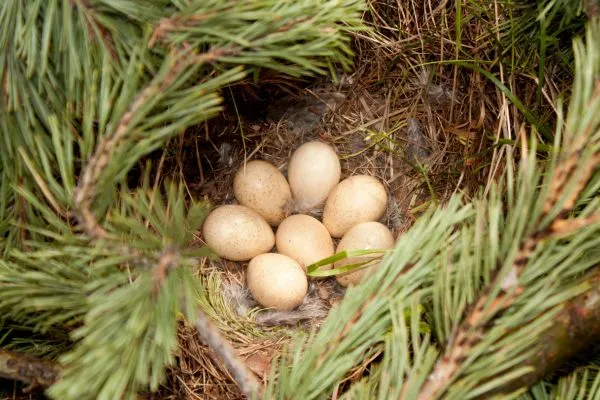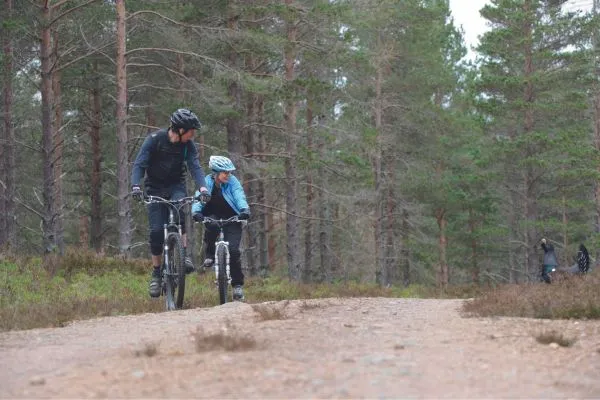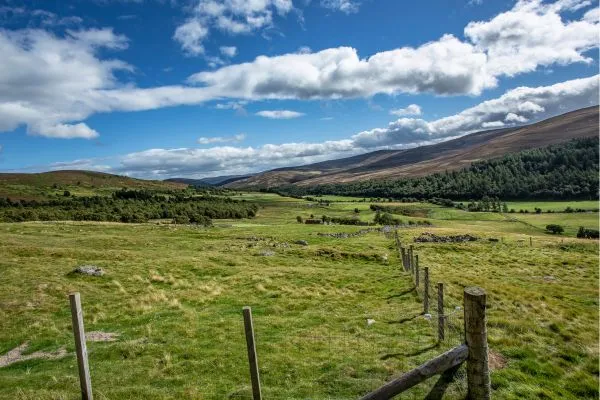Britain’s largest grouse is one of the most spectacular sights in the Highlands – but at this rate they will soon be extinct. Why? Richard Baynes seeks the culprits

A dark bird struts from the trees through powdery midwinter snow, its bulky form bowing and rearing. His fan tail is raised and the sharp, belching cry is a clear warning in the icy air. With eyes glittering in bright red surrounds, he is intimidating.
A few months later and spring is in the air. The capercaillie cock is still aggressive, but this time the target is rival male birds, and the cock’s sound is machine-gun staccato, like a football rattle. He clashes with another bird in a flurry of feathers, and the rival retreats. This is the lek, one of the Highlands’ greatest wildlife spectacles, in which cocks display for the right to mate with the hens.
It’s all wonderful to watch, but I can only describe what I see on YouTube. Despite countless visits over more than 40 years to the Cairngorm, heart of the capercaillie range, I have never seen one – and the chances of ever doing so are getting slimmer.
The rise and fall of capercaillies
The Highland capercaillies’ fortunes have waxed and waned through the centuries. In the 18th century, they became extinct; 200 years ago, they were reintroduced to Scotland from Sweden. By 1970, there were 20,000 birds, spread across areas including Easter Ross, Perthshire, Loch Lomond and Fife.
Since then, however, catastrophic decline has set in. The last estimate in 2022 suggested that just 542 birds are left, half the number six years earlier, and nearly all in Strathspey. It’s forecast that without drastic measures, they will be extinct in Scotland within 30 years.
So, what’s killing capercaillie? What should be done about it?
Scene of the crime
A scouring wind brings horizontal rain down from the Cairngorm plateau into Abernethy National Nature Reserve, snapping small branches and whipping up grit from the path.
This reserve, mostly run by the RSPB, is home to 85% of the country’s largest capercaillie population. This is near-ideal capercaillie habitat: mature woodland giving shelter from storms, open glades where these big birds can fly and a forest floor rich in heather and berries.
Loss of habitat such as this drove the original UK extinction of the birds – but is not thought to be the cause of the capercaillie’s recent decline.
Happy homes for Capercaillie
Capercaillie typically live in open pine woods with small clearings and a patchwork of vegetation, including heathers. In summer, they are sometimes found in mature oak woods.
Much of their current range is in the foothills of the Cairngorms, 200–300m up. Major efforts have been made in recent decades to build up the remaining native pine forests where capercaillies thrive, and areas of it are now expanding, encouraged by government grants and boosted by conservation-minded landowners. The spread of the forests to higher ground, often promoted by deeper deer culls, will provide more habitat, further away from frequent human intrusion.
In one slice of the RSPB Abernethy reserve, cattle are being used to browse the clearings and increase the diversity of vegetation, which capercaillie need. A similar area is being used to trial a remote controlled Robocutter, a mower that can have a similar effect.
Suspect 1: Humans
The capercaillies’ home in the Cairngorms may be remote but its rugged landscape and wild nature is attracting rising numbers of visitors. Walkers, picnickers and nature lovers roam its glens and fells, while mountain bikers love the Cairngorm foothills, blazing trails through woodland. All of this activity is known to disturb leks and nests.

This is crucial because the capercaillie decline is now driven partly by problems the birds have rearing young. A Game and Wildlife Conservation Trust (GWCT) survey showed an average of just 0.5 chicks per hen a year.
Yet Andy Ford, director of nature and climate change at Cairngorms National Park Authority (CNPA), suggests the problem of disturbance by humans is being addressed. He says that given alternative trails, walkers have been happy to avoid core capercaillie habitat. And when their mountain-bike groups saw a map of capercaillie areas, they realised many routes ran through them – so they changed them to avoid the birds. Ford says: “We didn’t ban them or say go elsewhere. They said ‘how can we help?’”

As a result, another 130 hectares of capercaillie habitat is undisturbed. So if human disturbance is no longer to blame, what is?
VERDICT: INNOCENT?
Suspect 2: Crows and foxes
While mountain bikers may choose to change their routes, predatory wild animals are not so amenable to reason or persuasion. Crows and foxes are high on the wanted list for feasting on capercaillie eggs and chicks.
Traditional Highland gamekeepers have always shot foxes and trapped crows, and this has helped protect the capercaillie. The Game and Wildlife Conservation Trust (GWCT) says fox snares – which are designed to catch and hold, rather than kill foxes – should never be set in capercaillie woods as they may also catch capercaillie, but other control methods must continue.
Conservation-minded landowners aren’t always comfortable with such methods – and the RSPB has scrapped fox and crow control at Abernethy National Nature Reserve, saying it has little effect on capercaillie numbers. It’s in early stages, but the alternative tactic of “diversionary feeding” – which involves providing a venison buffet to distract predators from consuming capercaillie eggs and chicks – shows promising signs.
VERDICT: NOT PROVEN
Suspect 3: Pine martens
Might some other predator also be to blame for the capercaillie collapse? It may be no coincidence that after years of decline, one predator species is spreading through the pine woods of the Cairngorms: the pine marten.
These elusive mammals are known to feed on capercaillie chicks and eggs – so many gamekeepers, and the GWCT, believe that pine martens, like other predators, should be culled. Rory Kennedy, the GWCT’s Scotland director, says: “It’s almost game over now for capercaillie… the reality is removing a density of pine marten now can have an immediate effect. Culling pine marten is not something any organisation wants to see but there may be a short-term intervention that’s necessary until we can develop non-lethal mechanisms.”
And yet the return of the pine marten is a Scottish conservation success, having been given strict legal protection after centuries of persecution. Andy Ford of the Cairngorm National Park Authority says the culling of one endangered species to protect another is out of the question. Any licence to kill pine martens could face legal challenges, and in any case, the Scottish Government has specifically told Ford that control of protected species must not be “taken forward”.
According to the RSPB’s Duncan Orr-Ewing, a cull would have to cover a huge area and kill many animals: “Pine martens are a species that are important in their own right, and they are also recovering their populations after centuries of human persecution.”
So what can be done to protect the capercaillie from the pine marten? Along with diversionary feeding of martens, trapping and shipping them to other areas is being investigated – and the GWCT is even looking at the possibility of contraception.
VERDICT: PARDONED?
Suspect 4 Deer
Lethal as pine martens and other predators may be to capercallies, they are not the main problem, according to a 2022 NatureScot review of capercaillie conservation and management.
Perhaps the most devastating impact comes from an unlikely source: deer. Or more specifically: the fences built to keep deer out of woodland. The fences are lethal to low-flying capercaillies, who collide with them, causing fatal injuries.

Since the 1990s, the CNPA has been removing fences where possible, and marking others with wooden battens allowing capercaillies to see them more clearly in the gloom of the forest. The CNPA’s Andy Ford says he is “reasonably confident” the project is working.
Efforts to eliminate fences continue, and, on conservation-minded estates, that is helped by cuts in deer numbers to foster natural woodland. But traditional sporting estates rely on revenues from deer stalking, and have an interest in maintaining large deer herds for sporting guns. Marking fences makes a big difference, but collisions still occur, and the GWCT says further fence removal is a priority.
VERDICT: GUILTY
Guilty Culprits
In reality, all the key suspects above have played their role in killing capercaillie over the years. In each case, action has been taken to lessen the harm caused to this noble species, but is it enough?
A count in 2023 showed a slight increase in males at some lek sites. It gives a glimmer of hope, but it is still vital to take action to ensure capercaillie remain.
If we can live with capercaillie, it shows that people and nature can get along together.'
NatureScot says it recognises the urgency of the situation, and is committed to saving the capercaillie. Cairngorms National Park Authority’s Andy Ford agrees: "Capercaillies are an icon of the Caledonian forest. They need large, highquality, well-connected habitat. If we can live with capercaillie, it shows that people and nature can get along together."
Capercaillie facts
What is a capercaillie?
The capercaillie is the largest of the grouse family. They live for six years, on average. Males can grow to 4kg and 85cm long, with a wingspan up to 125cm. Hens are half that weight.
The word capercaillie is derived from the Gaelic ‘capall coille’, which means ‘horse of the woods’ – a reference, perhaps, to its size.
What does a capercaillie look like?
In Scotland’s woods, few expect to see a turkey sized bird and its calls are loud and distinct. It exhibits extreme sexual dimorphism, with the male bird being twice the size of the female. The male has lush dark grey, green and brown plumage and a vivid red eye patch. It fans out its large distinctive tail to look even more impressive.
The hen is pale brown with dark bars and a red-orange throat. The capercaillie’s most distinctive behaviour is the lek, where rival cock birds compete to mate with hens by putting on a flamboyant display of gurgles, wheezes and flaring tail feathers. As dazzling as it is to watch, it can be brutal for the birds, with several individuals dying each year from exhaustion or wounds sustained during the fighting with rival males.
How many capercaillie are in Scotland?
The last comprehensive count in 2016 found 1,114 capercaillie in Scotland, their only UK home; a 2022 estimate found their number has halved since then.
Where do Capercaillie live?
The capercaillie range includes Scandinavia, eastern Europe and Russian Asia, and the mountains of central and southern Europe. While there is some decline, they are not globally at risk
Where do Capercaillie eat?
They eat conifer shoots and buds, and blaeberries and their shoots.
Find out more
Read our expert guide to Britain's rarest birds and listen to the CountryFile podcast episode when the team headed to the Cairngorms in search of the rarest bird.